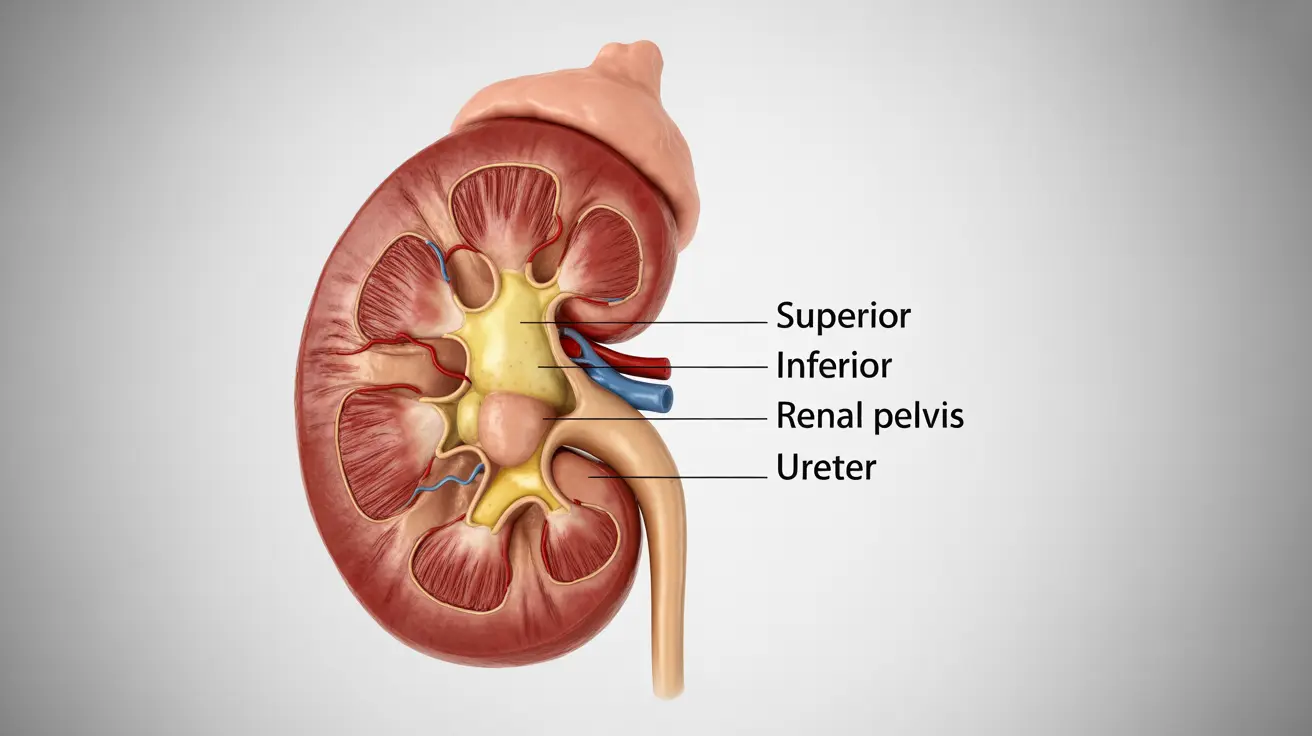Mild hydronephrosis is a condition where one or both kidneys become swollen due to the buildup of urine. This occurs when urine can't properly drain from the kidney to the bladder, causing the kidney to expand. While the condition can affect anyone at any age, understanding its symptoms, causes, and treatment options is crucial for proper management.
Early detection and treatment of mild hydronephrosis are essential to prevent potential complications and ensure optimal kidney function. This comprehensive guide will help you understand the condition better and know when to seek medical attention.
Signs and Symptoms of Mild Hydronephrosis
Mild hydronephrosis may not always present noticeable symptoms, particularly in its early stages. However, when symptoms do occur, they may include:
- Pain or discomfort in the back or side (flank pain)
- Changes in urination patterns
- Urinary tract infections
- Mild fever in some cases
- Abdominal discomfort
- Changes in urine color or consistency
The severity and combination of symptoms can vary significantly from person to person, making it important to consult a healthcare provider for proper evaluation.
Common Causes and Risk Factors
Several factors can contribute to the development of mild hydronephrosis:
Structural Issues
Physical blockages or abnormalities in the urinary system can lead to hydronephrosis, including:
- Kidney stones
- Ureteropelvic junction obstruction
- Scarring of the ureters
- Tumors (benign or malignant)
Pregnancy-Related Causes
Pregnancy can sometimes lead to mild hydronephrosis due to:
- Pressure from the growing uterus
- Hormonal changes affecting urinary tract function
- Changes in body position and posture
Other Contributing Factors
Additional causes may include:
- Enlarged prostate in men
- Neurological conditions affecting bladder function
- Previous surgery or injury to the urinary tract
Diagnosis and Assessment
Healthcare providers use various methods to diagnose mild hydronephrosis:
- Ultrasound imaging
- CT scans
- MRI studies
- Blood tests to assess kidney function
- Urinalysis to check for infection or other abnormalities
Treatment Approaches
Treatment for mild hydronephrosis depends on the underlying cause and severity of the condition. Common approaches include:
Conservative Management
In some cases, mild hydronephrosis may resolve on its own, particularly if it's pregnancy-related or temporary. During this time, healthcare providers may recommend:
- Regular monitoring
- Increased fluid intake
- Pain management if needed
- Treatment of any underlying infections
Medical Interventions
More direct treatments may include:
- Antibiotics for infections
- Medications to help with urinary flow
- Placement of a temporary drainage tube (stent)
- Treatment of underlying conditions like kidney stones
Surgical Options
In some cases, surgery might be necessary to:
- Remove blockages
- Correct structural abnormalities
- Address more serious underlying conditions
Frequently Asked Questions
What are the common symptoms of mild hydronephrosis that I should watch for? The most common symptoms include flank pain, changes in urination patterns, urinary tract infections, and possible fever. Some people may experience abdominal discomfort or changes in urine appearance.
What causes mild hydronephrosis and how is it diagnosed? Mild hydronephrosis can be caused by various factors including kidney stones, pregnancy, structural abnormalities, or urinary tract obstruction. Diagnosis typically involves imaging tests like ultrasound, CT scans, or MRI, along with blood tests and urinalysis.
How is mild hydronephrosis treated and can it resolve on its own? Some cases of mild hydronephrosis, particularly those related to pregnancy, may resolve spontaneously. Treatment options range from conservative management with monitoring to medical interventions or surgery, depending on the underlying cause.
What complications can arise if mild hydronephrosis is left untreated? Untreated hydronephrosis can lead to kidney damage, chronic pain, recurring urinary tract infections, and potential loss of kidney function. Early intervention is crucial to prevent these complications.
Are there lifestyle changes or prevention tips to reduce the risk of mild hydronephrosis? Preventive measures include staying well-hydrated, maintaining good urinary hygiene, seeking prompt treatment for urinary tract infections, and addressing any underlying conditions that might contribute to the development of hydronephrosis.




